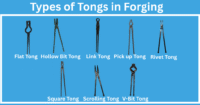Advantages and Disadvantages of Bolted Connection
Published: 26 Sep 2025
Bolted connections are one of the most common ways to join two or more parts together. It uses a bolt and a nut to fasten materials like metal, wood, or concrete. This type of joint is called a non-permanent connection because it can be assembled and disassembled easily without damaging the parts. That is why bolted joints are widely used in construction, machines, vehicles, and even furniture. But like every fastening method, bolted connections have both strengths and weaknesses. Let’s explore the main advantages and disadvantages.
Advantages of Bolted Connection
- Simple design
Bolted joints have a very simple design, which makes them easier to understand and use compared to welded or riveted joints.
2. Strong and reliable
A properly tightened bolt can handle heavy loads. In many cases, bolted joints are stronger than riveted joints and provide long-lasting performance.
3. Easy to assemble and disassemble
You only need a nut and a bolt to create a joint. With simple tools like a wrench, you can quickly install or remove the connection whenever needed.
4. Reusable
Bolts are not single-use items. They can be removed, checked, and reused, which saves both time and cost.
5. Low cost
Bolt joints are cheaper than welding or riveting because they require fewer tools, less manpower, and less time.
6. Safe and cold process
Unlike welding, bolting does not use heat. This makes it safer, as there is no risk of fire or damage caused by high temperatures.
7. Quick maintenance and replacement
If a bolt fails, you can easily replace it without affecting the entire connection. This makes repairs simpler and easier.
8. Available in many options
Bolts come in different sizes, finishes, and materials. From stainless steel to zinc-coated options, you can choose the right type for strength, durability, or even appearance.
Disadvantages of Bolted Connection
- Can loosen under vibration
Bolted joints may loosen when exposed to vibration or movement, which means regular inspection and tightening are necessary.
2. Accuracy depends on tightening
The strength of the joint depends on proper tightening. If it is not tightened correctly, the connection may fail.
3. Risk of corrosion
Since bolts are often exposed to air and moisture, they can rust over time if not protected with coatings or proper material choice.
4. Extra weight and space
Bolted joints usually add more weight and require more space compared to riveted or welded joints, which is a drawback in lightweight or compact designs.
5. Need for maintenance
Bolts require periodic checks, lubrication, and sometimes replacement, which increases maintenance work compared to permanent joints.
6. Installation challenges
If the holes are not drilled correctly or the threads are damaged, the bolt may be difficult to install or remove.
Conclusion
Bolted connections are one of the most practical and widely used fastening methods. They are strong, cost-effective, reusable, and easy to install, which makes them ideal for construction, machinery, and everyday use. However, they also have drawbacks such as loosening under vibration, the risk of corrosion, and the need for regular maintenance. By understanding both the advantages and disadvantages, you can decide whether a bolted connection is the right choice for your project.

- Be Respectful
- Stay Relevant
- Stay Positive
- True Feedback
- Encourage Discussion
- Avoid Spamming
- No Fake News
- Don't Copy-Paste
- No Personal Attacks

- Be Respectful
- Stay Relevant
- Stay Positive
- True Feedback
- Encourage Discussion
- Avoid Spamming
- No Fake News
- Don't Copy-Paste
- No Personal Attacks


